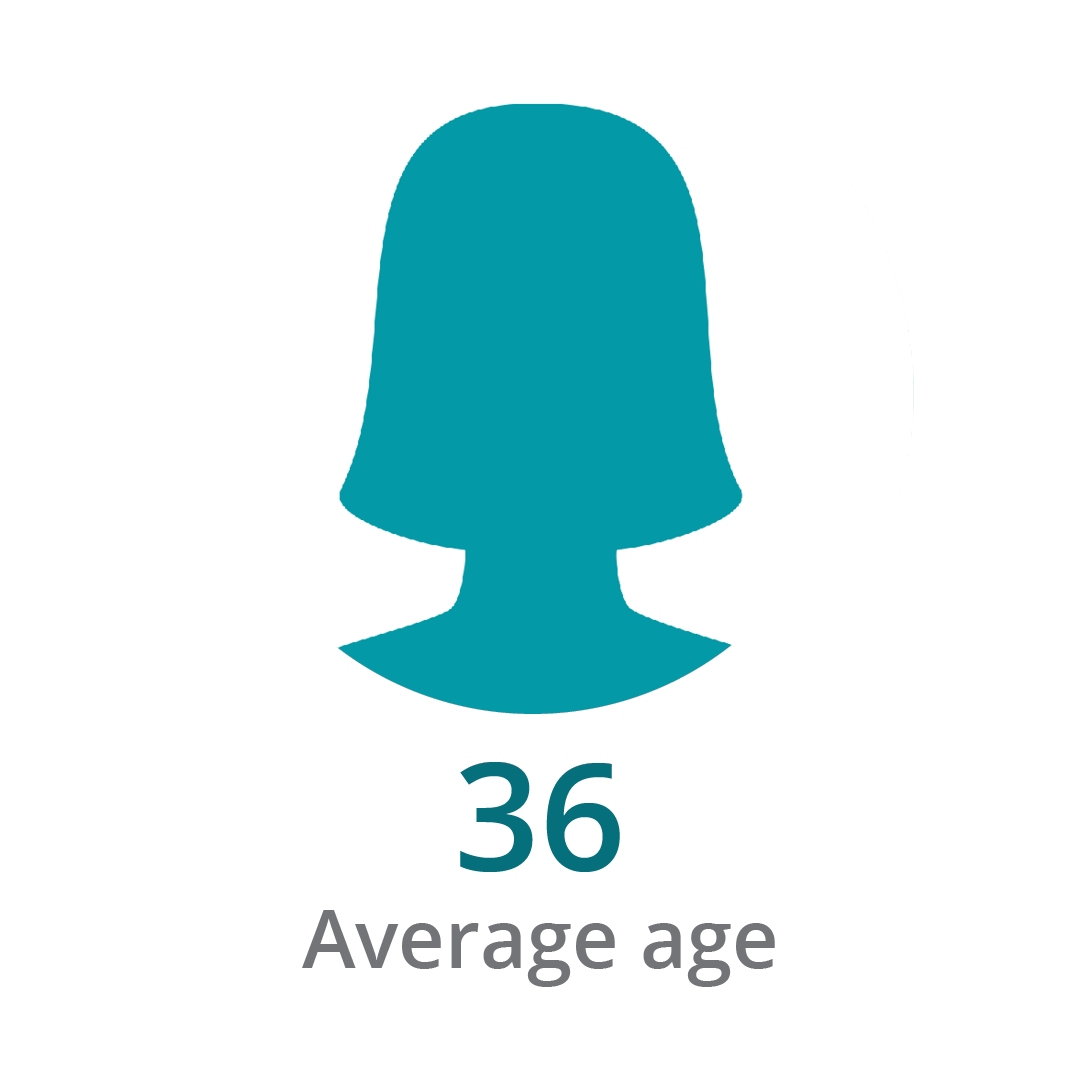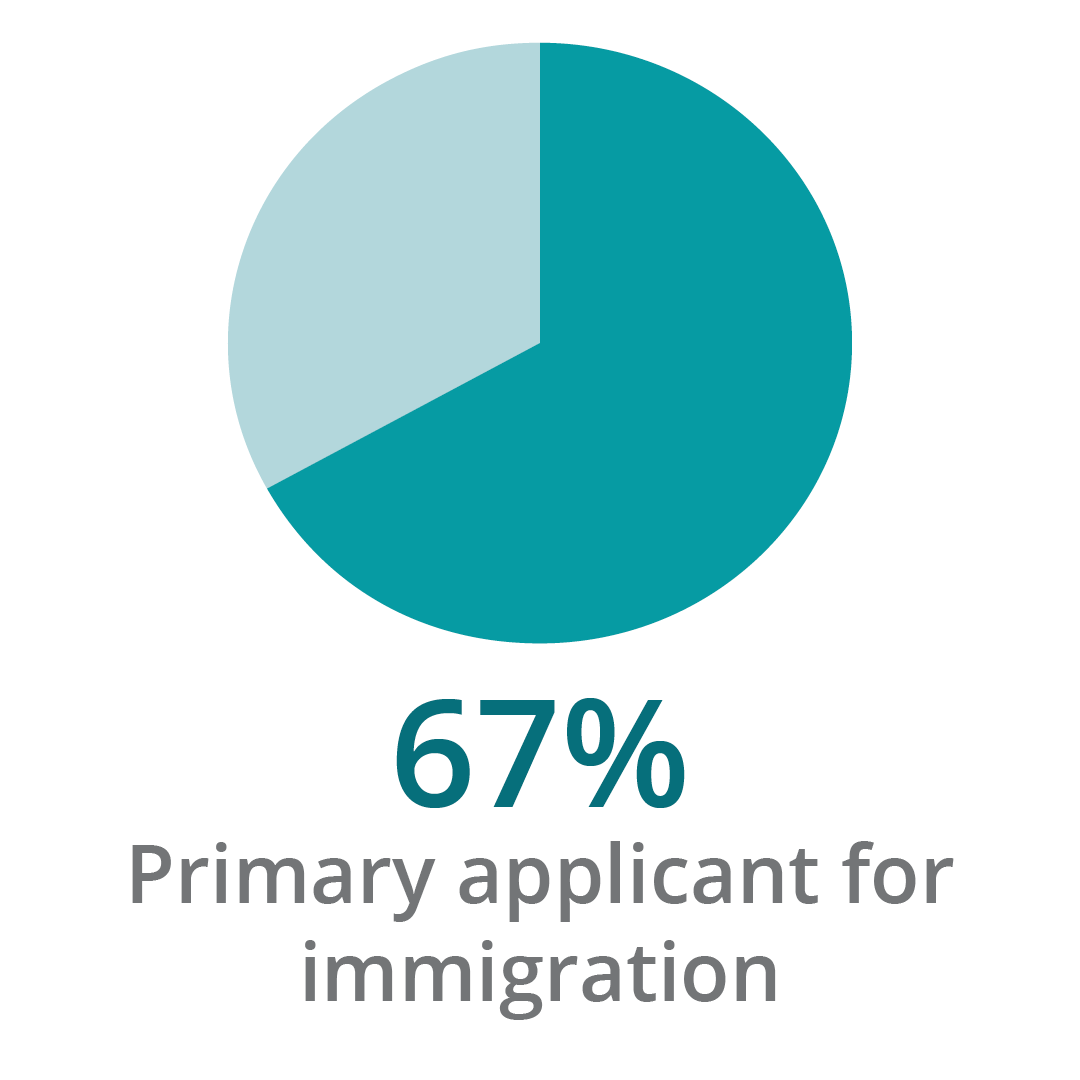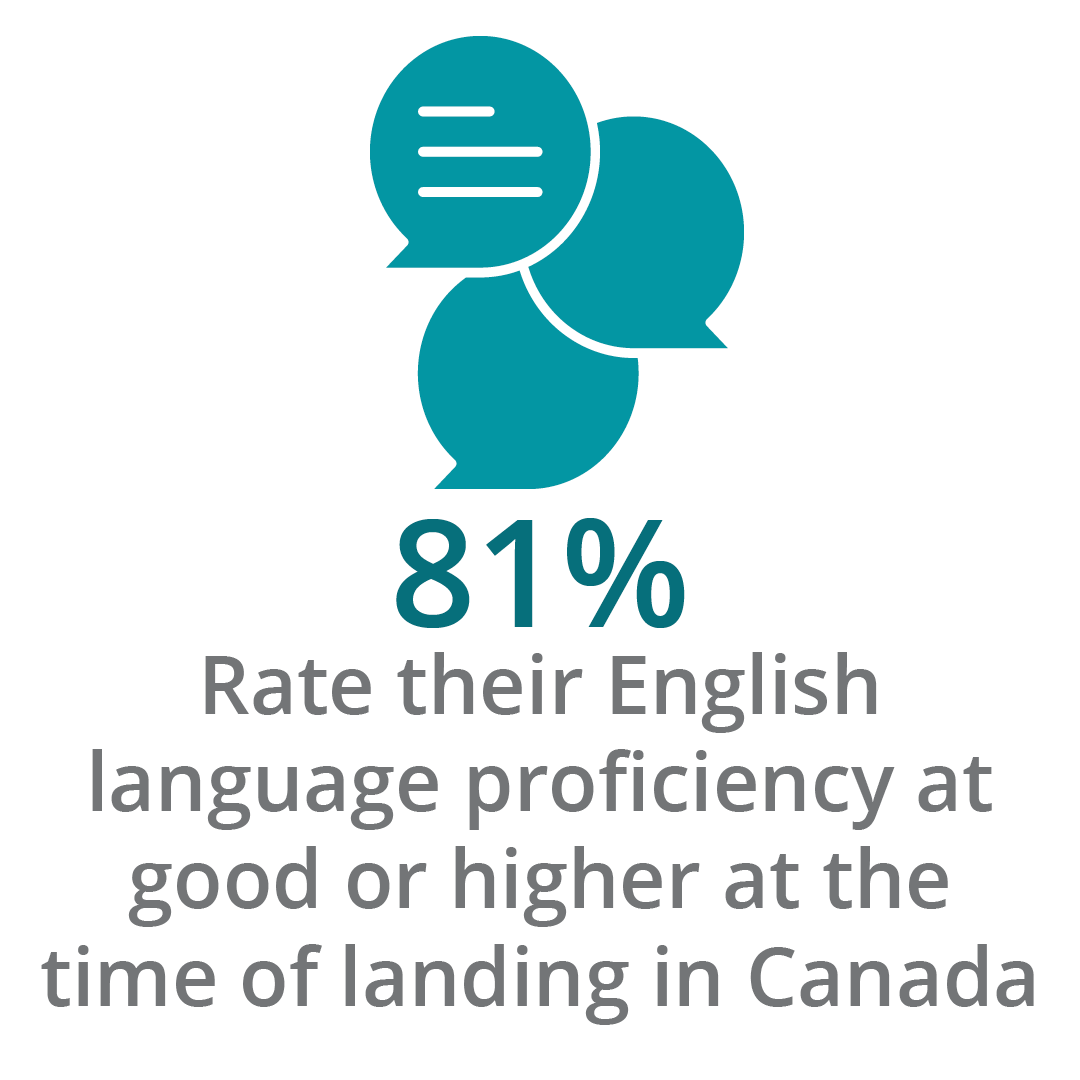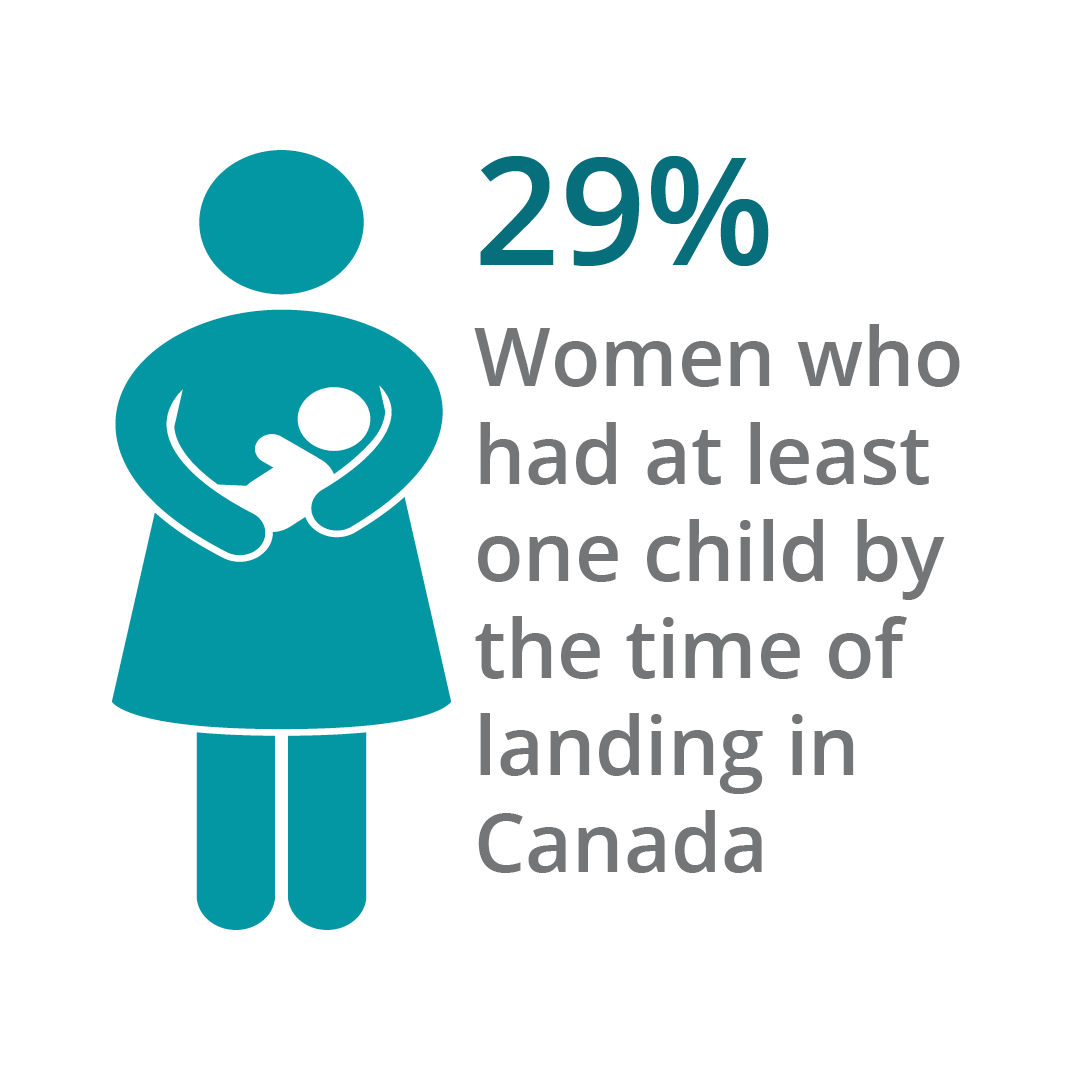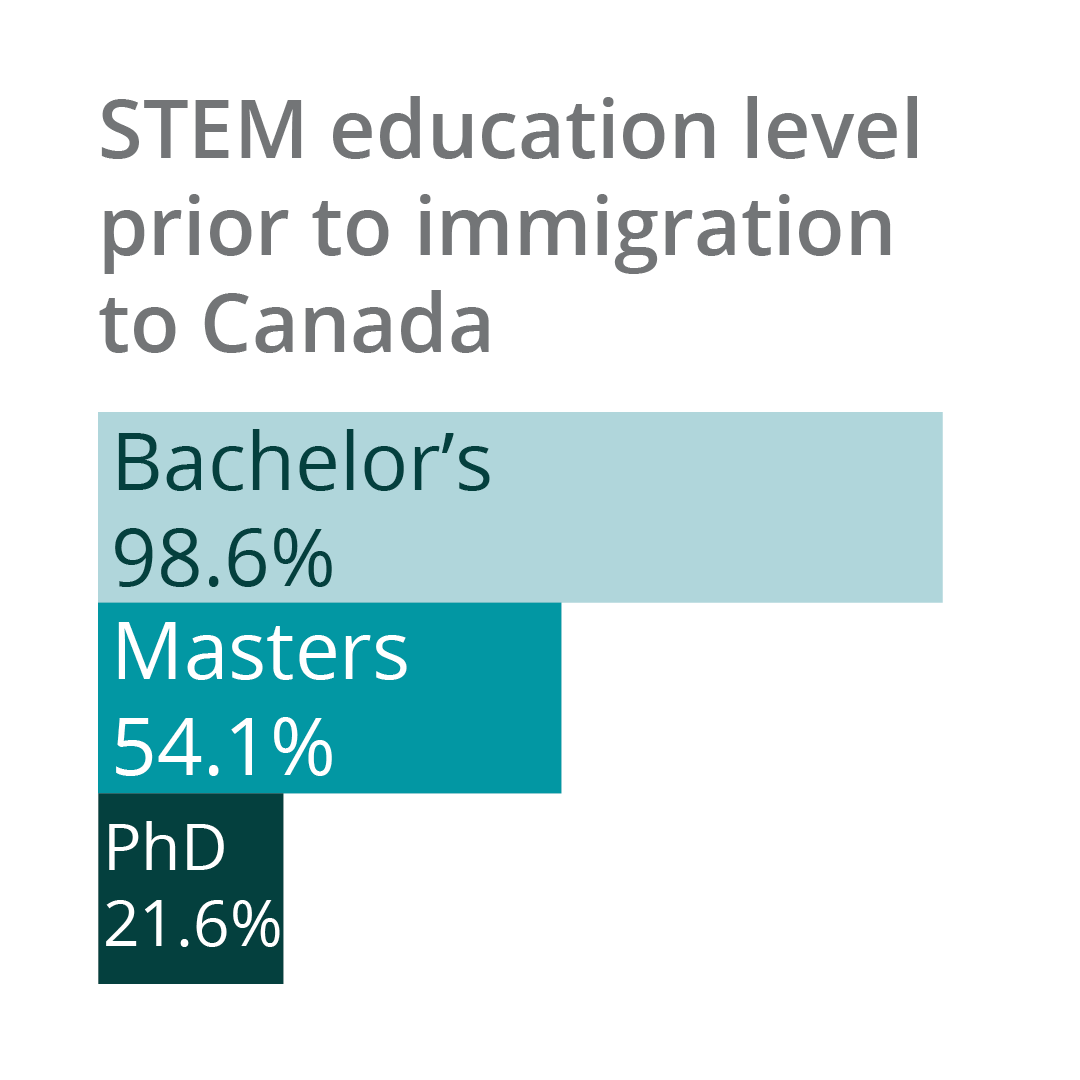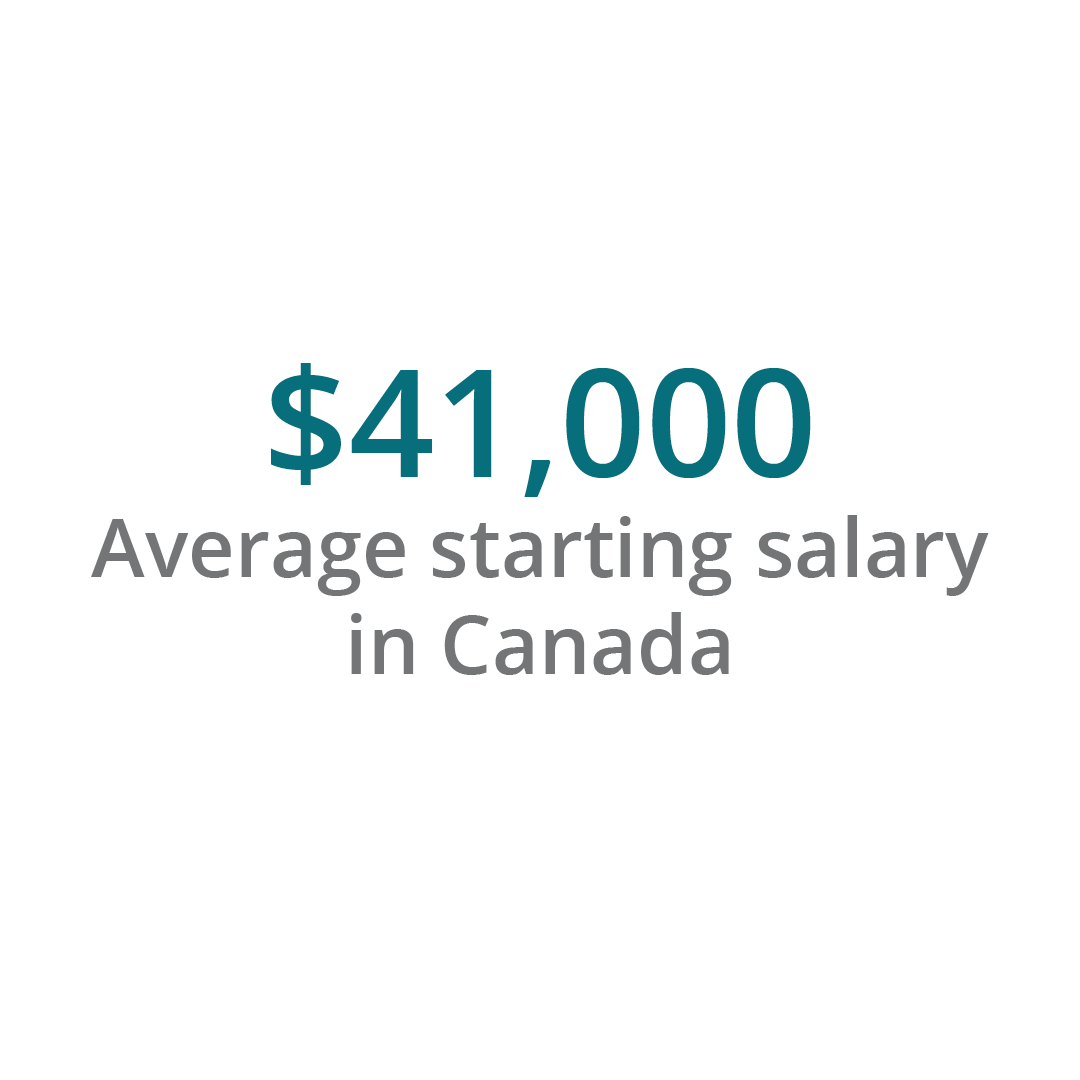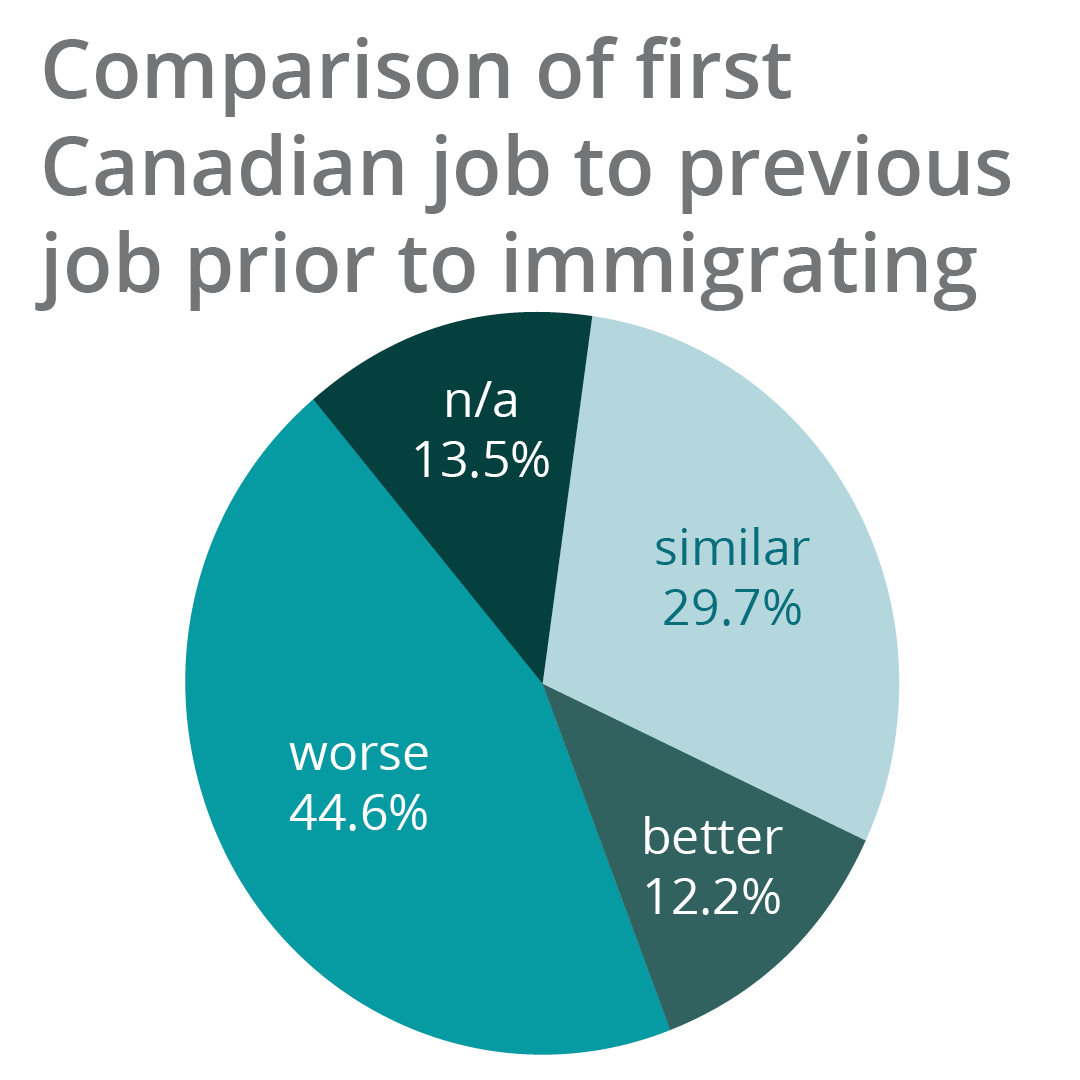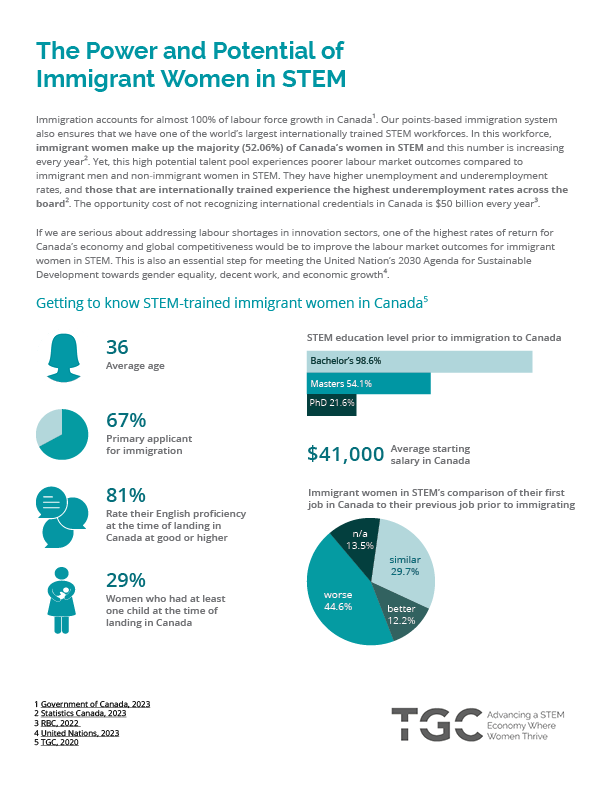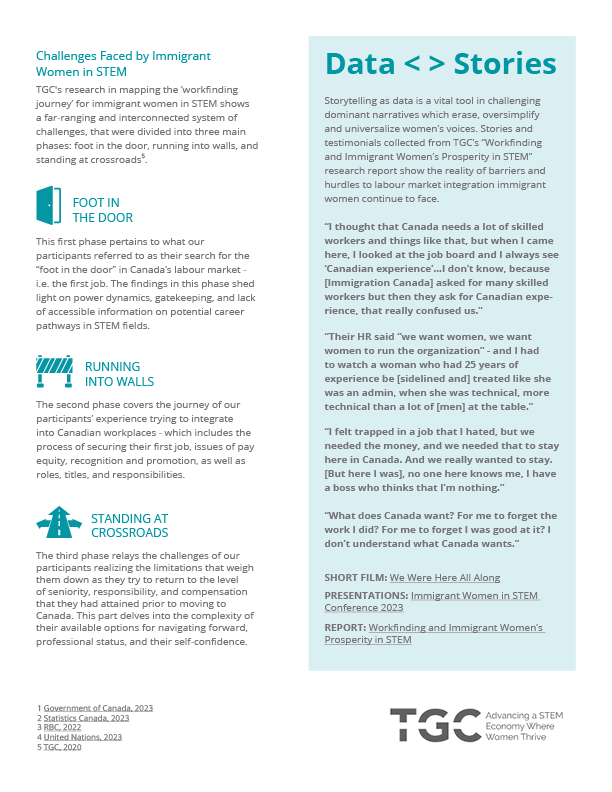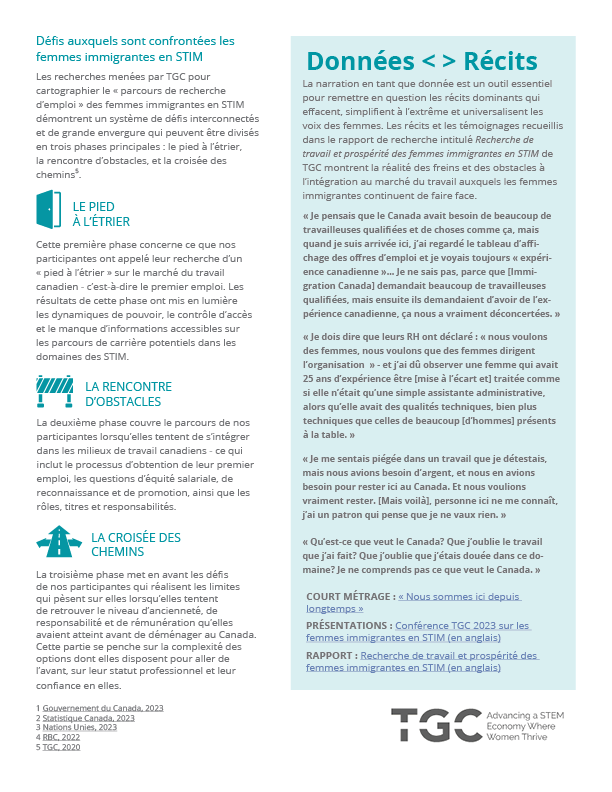Immigrant Women in STEM
Immigrant Women in STEM
Immigrant women make up the majority (52.06%) of Canada’s women in STEM and this number is increasing every year. Yet, this high potential talent pool experiences the worst labour market outcomes compared to immigrant men and non-immigrant women in STEM. They have higher unemployment and underemployment rates, and those that are internationally trained experience the highest underemployment rates across the board [1].
If we are serious about addressing labour shortages in innovation sectors, one of the highest rates of return for Canada’s economy and global competitiveness would be to improve the labour market outcomes for immigrant women in STEM. This is also an essential step for meeting the United Nation’s 2030 Agenda for Sustainable Development towards gender equality, decent work, and economic growth [2].
““I thought that Canada needs a lot of skilled workers and things like that, but when I came here, I looked at the job board and I always see ‘Canadian experience’...I don’t know, because [Immigration Canada] asked for many skilled workers but then they ask for Canadian experience, that really confused us.””
Workfinding and Immigrant Women’s Prosperity in STEM
TGC conducted a two-year, Canada-wide analysis of the unique challenges immigrant women face in finding employment in science, technology engineering and mathematics (STEM) occupations. The results of Workfinding and Immigrant Women’s Prosperity in STEM challenge persistent stereotypes of how immigrant women are perceived, as well as illustrating the necessity of linking Canada’s goals of establishing a competitive innovation economy and the workfinding experiences of STEM-trained immigrant women.
Challenges Faced by Immigrant Women in STEM
The Workfinding and Immigrant Women’s Prosperity in STEM research mapped the ‘workfinding journey’ for immigrant women in STEM and showed a far-ranging and interconnected system of challenges, that were divided into three main phases: foot in the door, running into walls, and standing at crossroads.
Foot in the Door
This first phase pertains to what our participants referred to as their search for the “foot in the door” in Canada’s labour market - i.e. the first job. The findings in this phase shed light on power dynamics, gatekeeping, and lack of accessible information on potential career pathways in STEM fields.
Running into Walls
The second phase covers the journey of our participants’ experience trying to integrate into Canadian workplaces - which includes the process of securing their first job, issues of pay equity, recognition and promotion, as well as roles, titles, and responsibilities.
Standing at Crossroads
The third phase relays the challenges of our participants realizing the limitations that weigh them down as they try to return to the level of seniority, responsibility, and compensation that they had attained prior to moving to Canada. This part delves into the complexity of their available options for navigating forward, professional status, and their self-confidence.
““What does Canada want? For me to forget the work I did? For me to forget I was good at it? I don’t understand what Canada wants.””
Explore the Journeys of STEM-Educated Immigrant Women in Canada
Five Journeys is a collaborative online exhibition that shares the stories of five STEM-educated women who immigrated from their home countries of India, Iraq, Israel, Pakistan, and Sri Lanka to build a new life for themselves and their families, and to continue to develop their own careers. They each share their experience of settling into Canada, figuring out the system, building a support network, and forming the foundation of their current careers.
““Their HR said ‘we want women, we want women to run the organization’ - [but] I had to watch a woman who had 25 years of experience be [sidelined and] treated like she was an admin, when she was technical, more technical than a lot of [men] at the table.””


